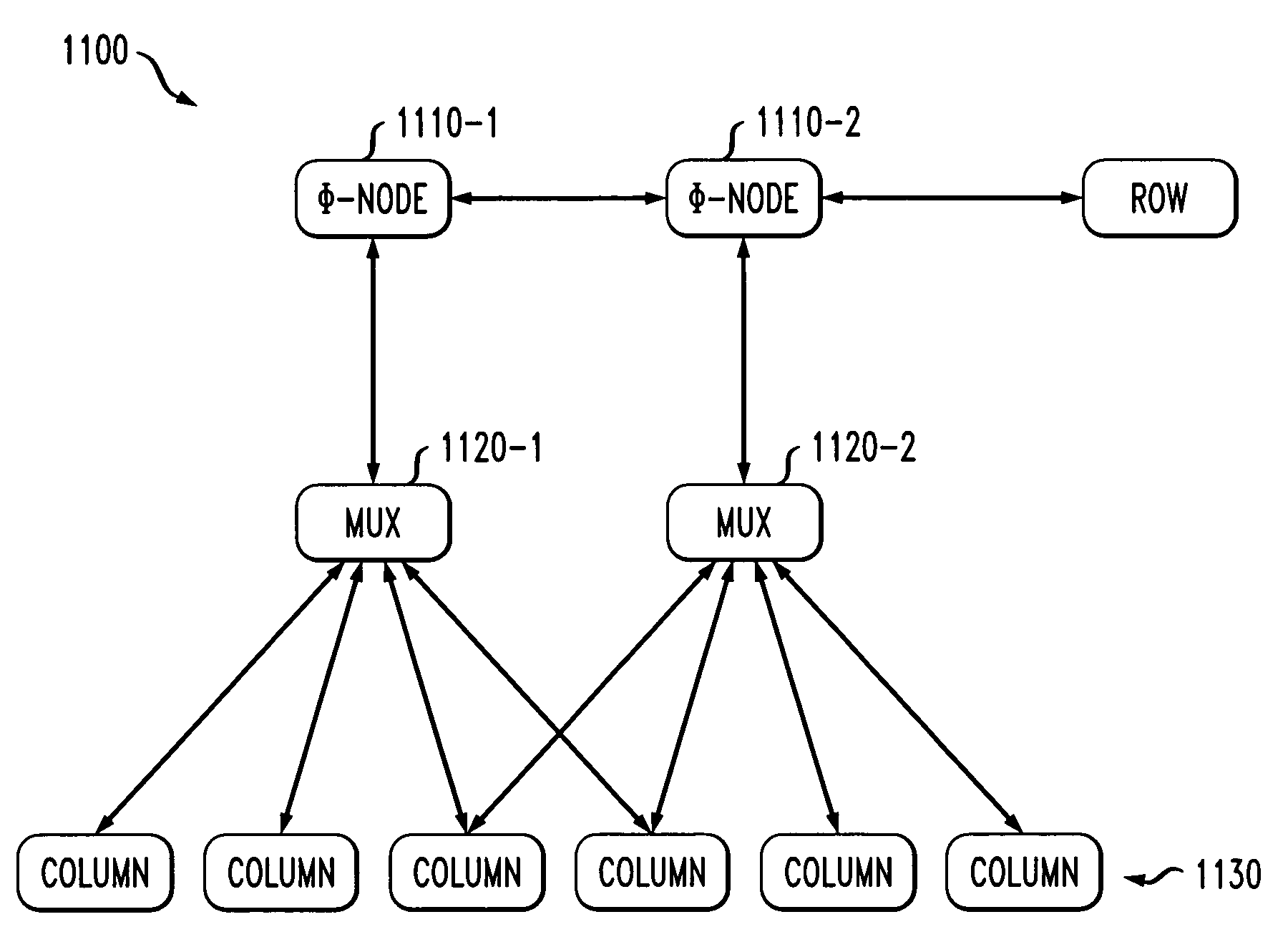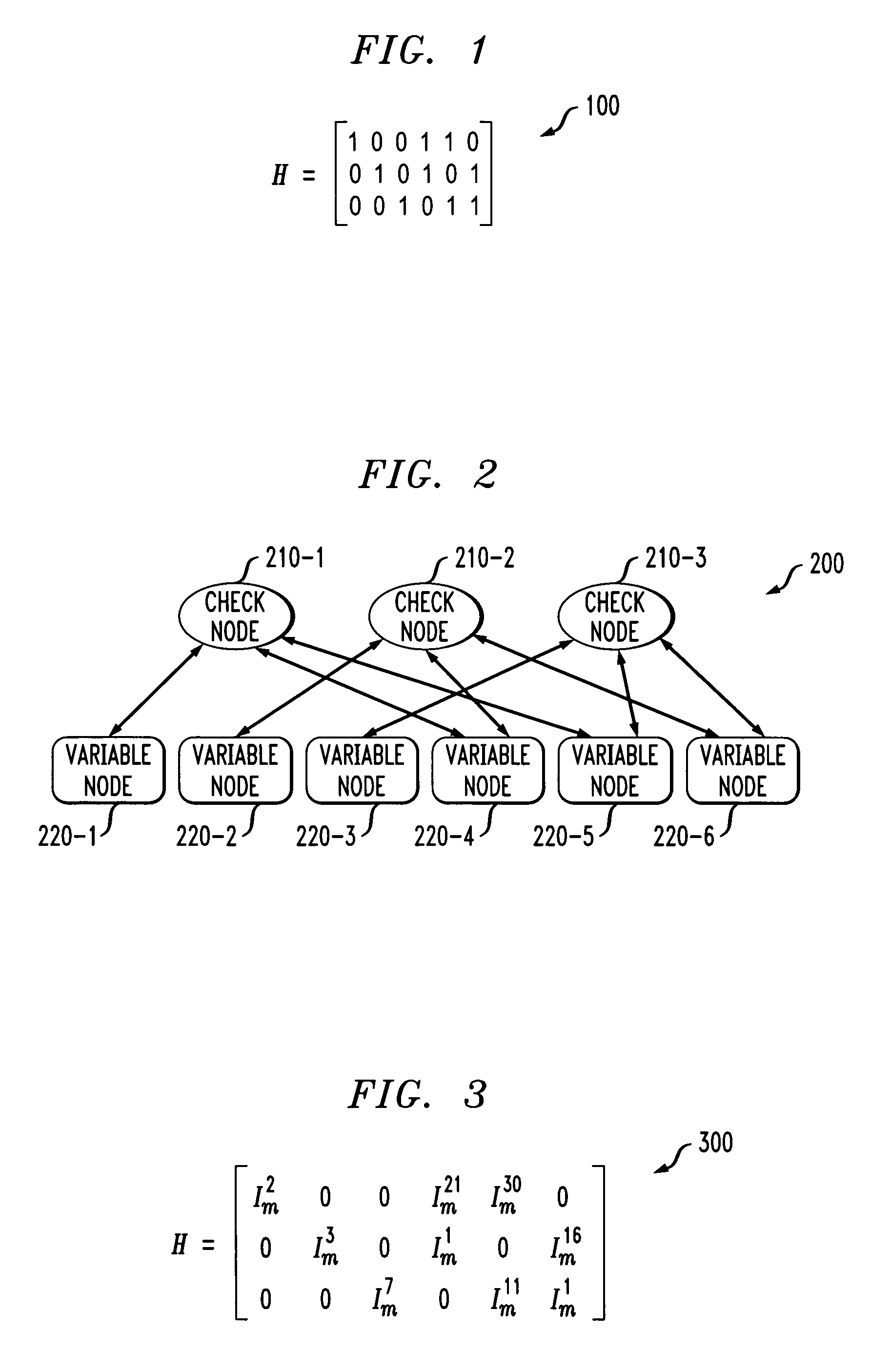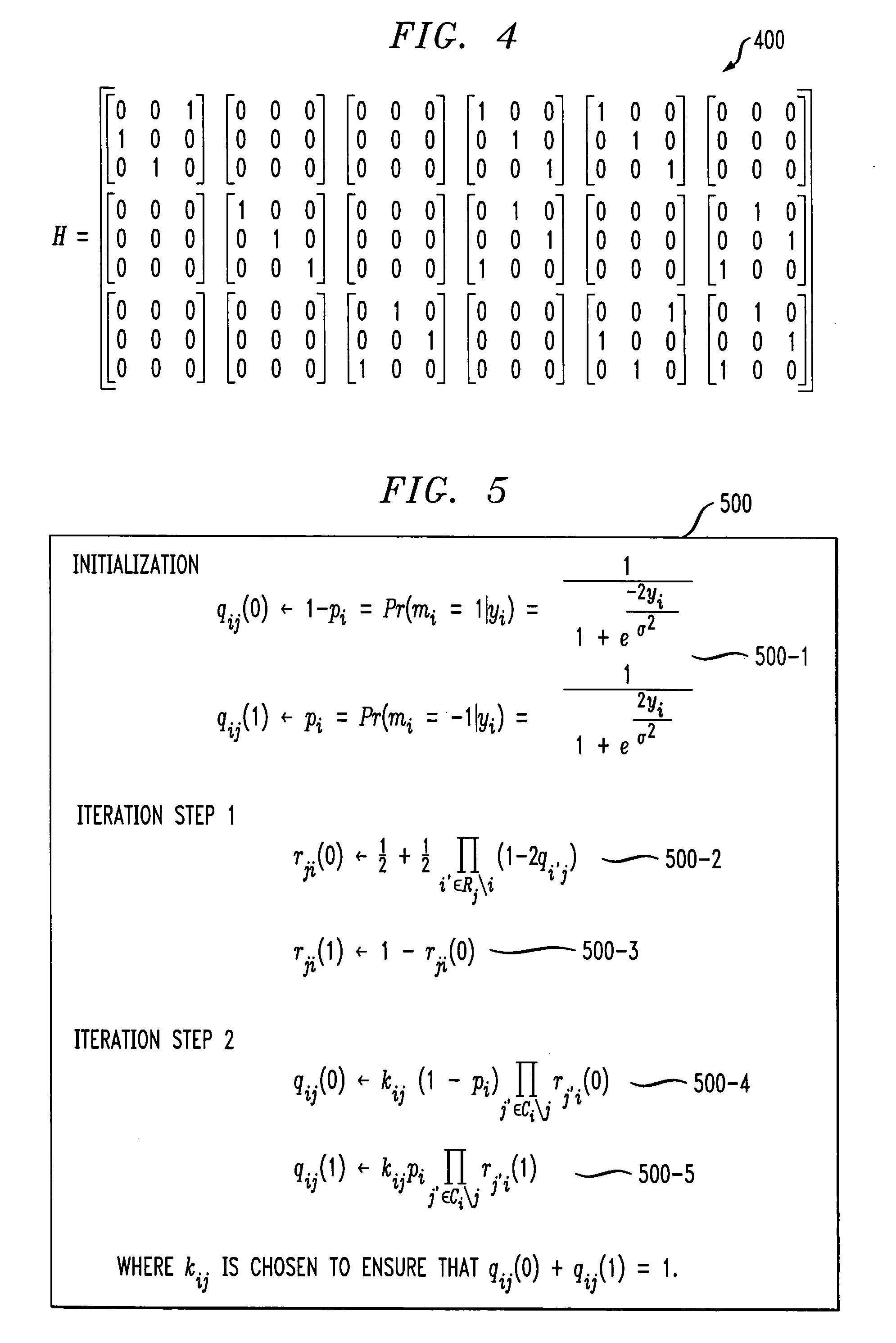Method and apparatus for block and rate independent decoding of LDPC codes
a low density parity and code technology, applied in the direction of coding, code conversion, electrical equipment, etc., can solve the problem of information transmission error
- Summary
- Abstract
- Description
- Claims
- Application Information
AI Technical Summary
Benefits of technology
Problems solved by technology
Method used
Image
Examples
Embodiment Construction
[0022]The present invention provides LDPC decoders that can support multiple code block lengths and code rates. According to another aspect of the invention, LDPC decoders are provided that can support a variable parity check matrix.
LDPC Codes
[0023]FIG. 1 illustrates a parity check matrix 100 for an exemplary LDPC code. FIG. 2 illustrates a Tanner graph 200 constructed from the parity check matrix 100 of FIG. 1. As shown in FIG. 2, the Tanner graph 200 is comprised of a plurality of variable nodes 220 and check nodes 210. The check nodes 210 correspond to rows of the parity check matrix. The i-th check node corresponds to the i-th row of the parity check matrix, H. Similarly, variable nodes correspond to columns of H. The connection between a given check node 210-k and a given variable node 220-k is made if a 1 is present in the parity check matrix 100.
[0024]It is noted that while the parity check matrix 100 of FIG. 1 is not a low-density or sparse matrix as the mean value is 0.5, i...
PUM
 Login to View More
Login to View More Abstract
Description
Claims
Application Information
 Login to View More
Login to View More - R&D
- Intellectual Property
- Life Sciences
- Materials
- Tech Scout
- Unparalleled Data Quality
- Higher Quality Content
- 60% Fewer Hallucinations
Browse by: Latest US Patents, China's latest patents, Technical Efficacy Thesaurus, Application Domain, Technology Topic, Popular Technical Reports.
© 2025 PatSnap. All rights reserved.Legal|Privacy policy|Modern Slavery Act Transparency Statement|Sitemap|About US| Contact US: help@patsnap.com



